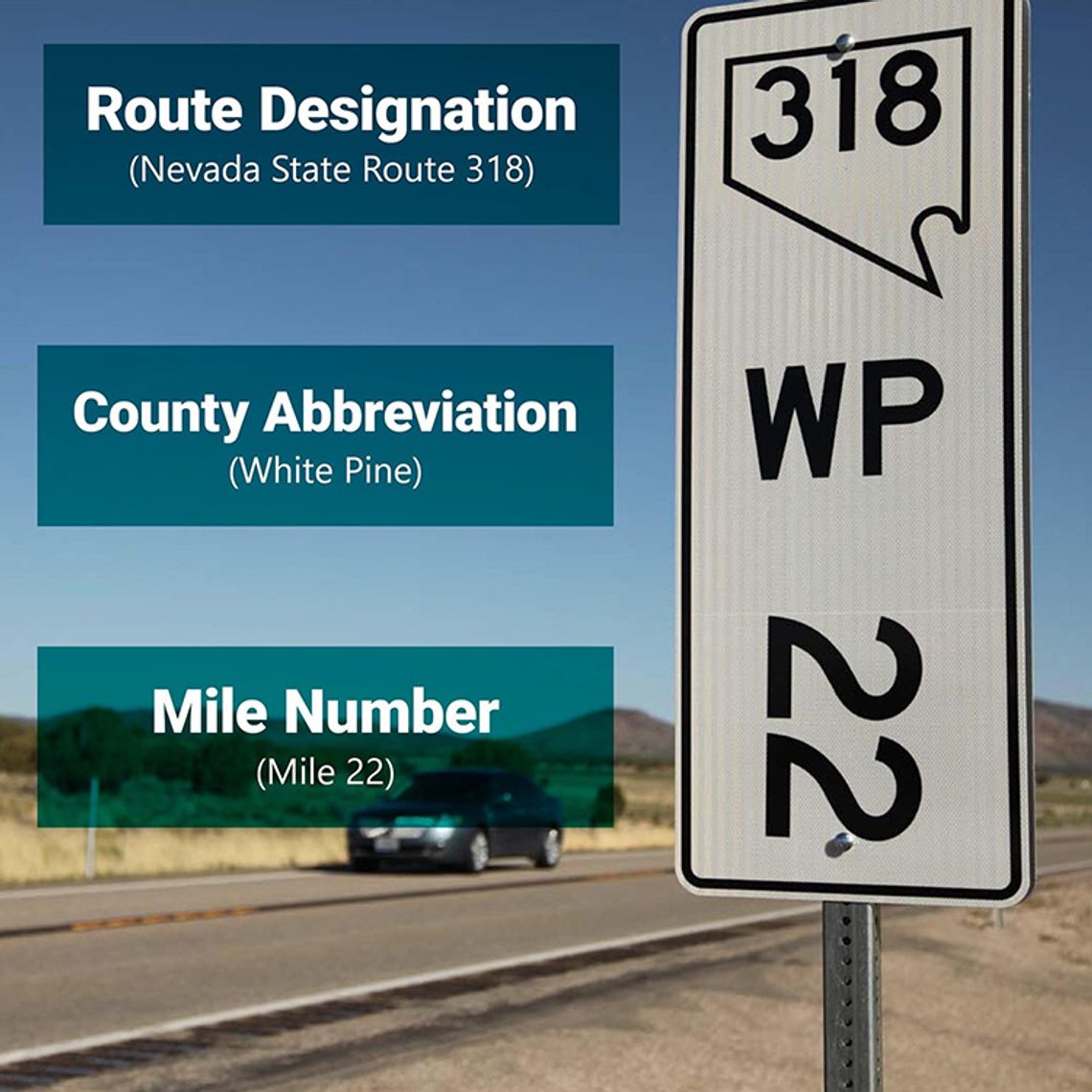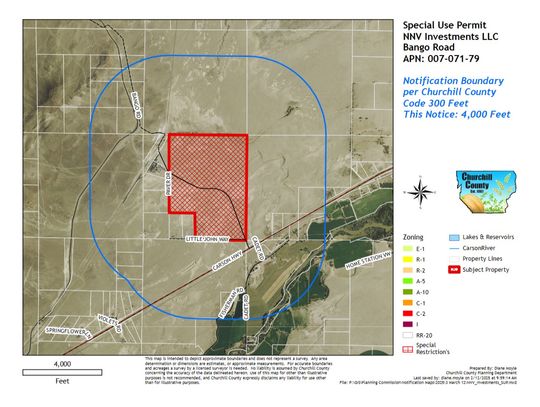The Nevada Department of Transportation displays milepost signs along state roads as an important source of driver information. They are vital in efficiently providing needed service when responding to car crashes or roadway incidents and provide an important reference for road engineers and maintainers. They also serve motorists by offering references to their location.
For these reasons, it’s important to know what the numbers on mileposts mean.
How to Read a Milepost
The top two lines of a milepost list the interstate or U.S., state, or other route numbers, for example, “IR 15” for Interstate 15 or “US 95” for U.S. 95. Just below the route designation will be a two-letter abbreviation of the county. The actual mile is listed vertically at the bottom of each milepost.
Some mileposts marking the exact location of a structure like a bridge will have four numbers such as 18 86. In this example, 18 denotes the full mile, and 86 indicates the fraction of the mile where the structure is located.
On interstates, two types of mileposts exist. Green post mile markers list the mileage from the state line while white and black standard mileposts list the mileage from the county line. The U.S., state, and other routes strictly list the mileage from the county line.
For milepost signs, roadway mileage numbers start from the south or west end of where a road first enters a state or county. The mileage number continues to build as the road travels north or east.
When roadways overlap, such as Interstate 580 and U.S. 395A in Washoe and Pleasant valleys, the Interstate will be the only one listed on the milepost. If two U.S. routes combine as one route for a distance, like U.S. 6 and U.S. 95, the lowest-numbered route will be featured on the milepost.
New Milepost Signs
NDOT is installing enhanced, larger milepost signs as part of its many highway improvement projects.
For increased visibility and road safety, these new mileposts stand five feet taller than the roadway surface and are more than twice as large as existing mile markers. The larger size allows easier reading of milepost locations, which can be particularly important in locating a motorist’s location during emergency or crash response situations.
The new mileposts are posted further off the side of the road and mounted into the ground with a permanent concrete footing, leaving them less prone to being accidentally pushed over by vehicles and ensuring any needed replacement signage can be easily reinstalled at the exact location.
Safety Recommendation
It is recommended that motorists be aware of milepost signs, particularly while driving in rural areas. Knowing your milepost location will allow for quicker response if needing to call for emergency assistance.









































Comment
Comments